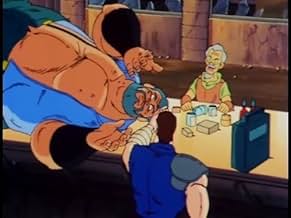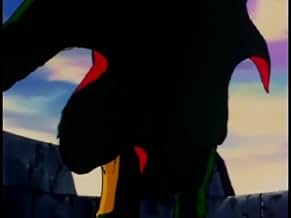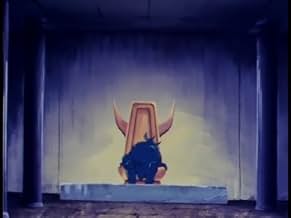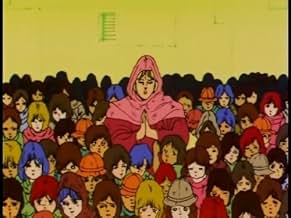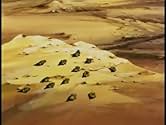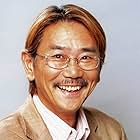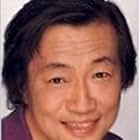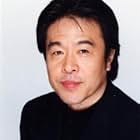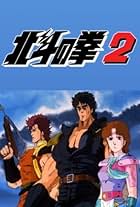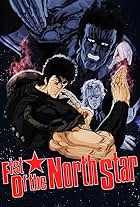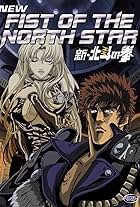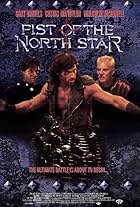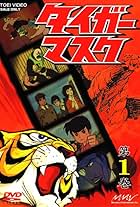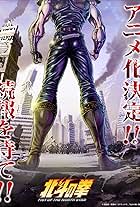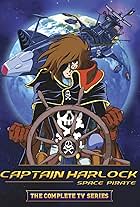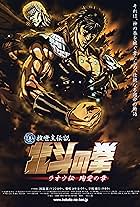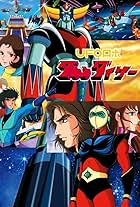IMDb RATING
8.2/10
3.7K
YOUR RATING
After a nuclear war turns Earth into a lawless wasteland, Kenshiro, a practitioner of the deadly master art "Hokuto Shinken", fights a succession of tyrannical warriors to restore order.After a nuclear war turns Earth into a lawless wasteland, Kenshiro, a practitioner of the deadly master art "Hokuto Shinken", fights a succession of tyrannical warriors to restore order.After a nuclear war turns Earth into a lawless wasteland, Kenshiro, a practitioner of the deadly master art "Hokuto Shinken", fights a succession of tyrannical warriors to restore order.
Browse episodes
Storyline
Did you know
- TriviaAmerican Wrestler John Cena has said that Fist of the North Star is his favourite anime movie.
- Alternate versionsThe first four episodes were released edited together as a movie in Sweden.
- ConnectionsFeatured in Club Dorothée: Episode dated 22 March 1989 (1989)
Featured review
"Hokuto no Ken" ("Fist of the North Star," 1984) took its cue from the Australian movies, MAD MAX (1979) and THE ROAD WARRIOR (aka MAD MAX 2, 1981), and pioneered a new style of violent animated action on Japanese television. It presented a more exaggerated version of the movies' post-apocalyptic landscape and its roving bands of savage bikers with Mohawk haircuts, spiked leather and bulging muscles who ravage the budding communities trying to rebuild society in a bleak and devastated terrain. Into the role of defender of the weak steps Ken, master of Hoto Shin Ken, or Fist of the North star, an intricate martial arts system that wreaks havoc on his opponents' nervous systems and causes all kinds of fatal disfigurements, usually an exploding decapitation. The stoic, deadpan Ken brooks no argument with those who offend him and spends most of the series ridding the landscape of these musclebound cretins. To balance out the constant violence with regular doses of sentiment, Ken's empathetic qualities are drawn out by the presence of two children, an adolescent harmonica-playing boy and a young girl saddled with a puppy, who become Ken's companions for much of the series.
While the violence is quite gruesome, the gore is muted by depicting the exploding heads in silhouette or shadow and having the spurting body fluids colored neutral hues. The carnage is, nevertheless, particularly satisfying because we get to watch dozens of murderous thugs get wasted, one by one, in colorful and imaginative ways. (The 1986 animated feature version of this series, also called FIST OF THE NORTH STAR, was much more explicit in its bloodshed.)
The first series lasted for 109 episodes, from 1984 to 1987, while a second series (1987-88) lasted 43 episodes. A number of episodes from the first season have been released in the U.S. and include the first story arc (22 episodes), which involves Ken's quest for vengeance against Shin, his one-time buddy and master of the Fist of the Southern Cross, who took Ken's girl away from him--by force--and left him with a seven-mark scar in the form of Ursa Major, the Big Dipper (or Great Bear) constellation. The second story arc gave Ken a new and equally formidable opponent in Raoh, master of Nanto Suichoken, a technique which literally slices opponents into pieces.
The animation does an expert job of recreating the stark imagery of the original manga (comic book), which was written by "Buronson" and drawn by Tetsuo Hara, capturing the near-desert landscape and spectacular urban ruins in evocative detail. The character design is equally well-etched, with great linework applied to even the most transient characters. Color is used well in both the parched quality of the arid landscape and the flamboyant nature of the rampaging biker gangs with their clown makeup and playing card gang motifs. There's a wash quality, suggesting water colors, in some of the background art. It should be pointed out that the hard-edged look and tone of the series is something traditional pen-and-ink animation could do so well but is much harder to achieve in the overly slick digital animation era in which anime finds itself today. A series like FIST is more to be valued because of the near impossibility of duplicating such an effort today.
While the violence is quite gruesome, the gore is muted by depicting the exploding heads in silhouette or shadow and having the spurting body fluids colored neutral hues. The carnage is, nevertheless, particularly satisfying because we get to watch dozens of murderous thugs get wasted, one by one, in colorful and imaginative ways. (The 1986 animated feature version of this series, also called FIST OF THE NORTH STAR, was much more explicit in its bloodshed.)
The first series lasted for 109 episodes, from 1984 to 1987, while a second series (1987-88) lasted 43 episodes. A number of episodes from the first season have been released in the U.S. and include the first story arc (22 episodes), which involves Ken's quest for vengeance against Shin, his one-time buddy and master of the Fist of the Southern Cross, who took Ken's girl away from him--by force--and left him with a seven-mark scar in the form of Ursa Major, the Big Dipper (or Great Bear) constellation. The second story arc gave Ken a new and equally formidable opponent in Raoh, master of Nanto Suichoken, a technique which literally slices opponents into pieces.
The animation does an expert job of recreating the stark imagery of the original manga (comic book), which was written by "Buronson" and drawn by Tetsuo Hara, capturing the near-desert landscape and spectacular urban ruins in evocative detail. The character design is equally well-etched, with great linework applied to even the most transient characters. Color is used well in both the parched quality of the arid landscape and the flamboyant nature of the rampaging biker gangs with their clown makeup and playing card gang motifs. There's a wash quality, suggesting water colors, in some of the background art. It should be pointed out that the hard-edged look and tone of the series is something traditional pen-and-ink animation could do so well but is much harder to achieve in the overly slick digital animation era in which anime finds itself today. A series like FIST is more to be valued because of the near impossibility of duplicating such an effort today.
- BrianDanaCamp
- Jul 10, 2002
- Permalink
Details
- Runtime25 minutes
- Color
Contribute to this page
Suggest an edit or add missing content


